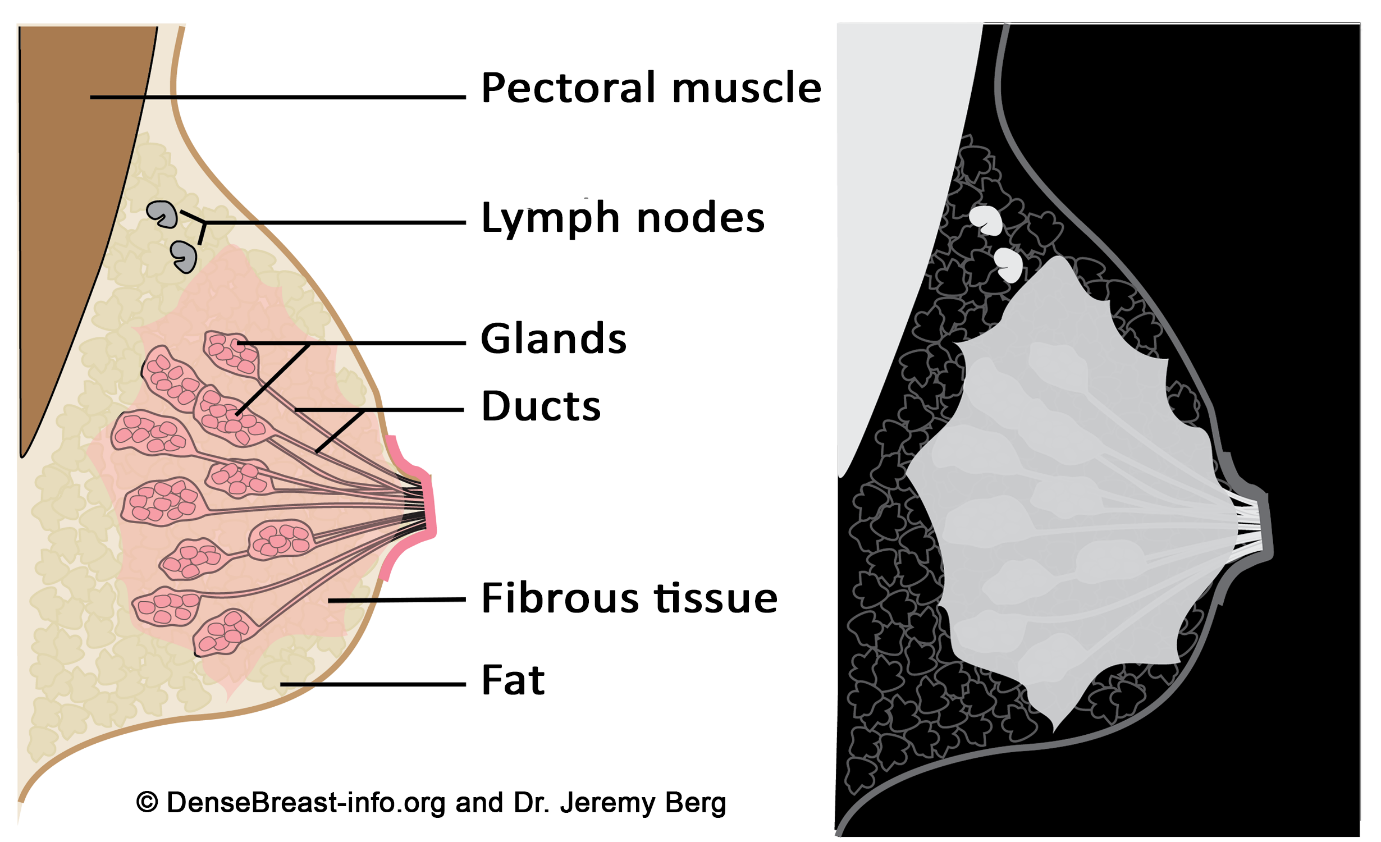The nurse recognizes that the following statement is true regarding the internal structures of the breast: The breast is made up of:
Glandular tissue, which supports the breast by attaching to the chest wall.
Fibrous, glandular, and adipose tissues
Primarily muscle with very little fibrous tissue.
Primarily milk ducts, known as lactiferous ducts.
The Correct Answer is B
A. Glandular tissue, which supports the breast by attaching to the chest wall: Glandular tissue is indeed a part of the breast structure, but it is not responsible for supporting the breast by attaching to the chest wall. It's the Cooper's ligaments, which are fibrous connective tissue, that provide structural support.
B. Fibrous, glandular, and adipose tissues: This statement is correct. The breast is composed of glandular tissue (responsible for milk production), fibrous tissue (including Cooper's ligaments for support), and adipose tissue (fat).
C. Primarily muscle with very little fibrous tissue: The breast contains very little muscle tissue. The main supportive structure is fibrous tissue, not muscle.
D. Primarily milk ducts, known as lactiferous ducts: Milk ducts are part of the glandular tissue and are responsible for carrying milk. However, the breast is not primarily made up of milk ducts; it consists of a combination of glandular, fibrous, and adipose tissues.

Nursing Test Bank
Naxlex Comprehensive Predictor Exams
Related Questions
Correct Answer is C
Explanation
A. Friction rub:
A friction rub is a grating or rubbing sound or sensation heard or felt during auscultation or palpation. It occurs when inflamed pleural or pericardial surfaces rub against each other during breathing or heartbeats, respectively.
B. Tactile fremitus:
Tactile fremitus refers to the palpable vibrations transmitted through the bronchopulmonary tree to the chest wall as the patient speaks. It is assessed by placing hands on the patient's back while the patient speaks certain words. Increased tactile fremitus can occur in conditions with lung consolidation, such as pneumonia.
C. Crepitus:
Crepitus is a crackling or grating sensation felt under the skin or heard when the ends of a broken bone rub against each other. It can also occur when air leaks into subcutaneous tissue, leading to a crackling sensation upon palpation.
D. Adventitious sounds:
Adventitious sounds refer to abnormal lung sounds heard during auscultation. These sounds include crackles (rales), wheezes, rhonchi, and pleural friction rubs. Adventitious sounds can indicate various respiratory conditions, such as pneumonia, bronchitis, or asthma.
Correct Answer is C
Explanation
In this sequence:
Vena cava brings deoxygenated blood from the body into the right atrium.
Blood flows from the right atrium to the right ventricle through the tricuspid valve.
The right ventricle pumps blood into the pulmonary artery to the lungs.
In the lungs, blood is oxygenated and returns to the heart via the pulmonary veins into the left atrium.
From the left atrium, blood moves to the left ventricle through the bicuspid (mitral) valve.
The left ventricle then pumps oxygenated blood into the body through the aorta.
This sequence represents the systemic and pulmonary circulation of the heart.

Whether you are a student looking to ace your exams or a practicing nurse seeking to enhance your expertise , our nursing education contents will empower you with the confidence and competence to make a difference in the lives of patients and become a respected leader in the healthcare field.
Visit Naxlex, invest in your future and unlock endless possibilities with our unparalleled nursing education contents today
Report Wrong Answer on the Current Question
Do you disagree with the answer? If yes, what is your expected answer? Explain.
Kindly be descriptive with the issue you are facing.
